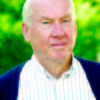Small World: The Great Islamic Divide
By Henry Precht
BN Columnist
According to Mark Twain, “God created war so that Americans would learn geography.†Had Twain lived longer he might also have said that there was a divine purpose in Khomeini’s revolution in Iran, for it taught Americans a full course on Islamic theology.
If you were absent for those beginning sessions, I’m sorry, but we have to move along. Today’s subject is the conflict — real and rhetorical — between Sunnis and Shia. It is — perhaps even more than the Arab-Israel conflict — the greatest potential threat to Middle Eastern stability and, hence, to American interests there.
As we have learned, the Sunni-Shia split dates from the earliest days of Islam and has to do with the succession to the Prophet Mohammed. Shias hold that his mantle descended through the line of kinship; Sunnis follow the men who were selected to lead the faith. Sunnis, the majority, won most of the early battles. Shias, in consequence, see themselves as martyrs; their holy days are marked by mournful reenactments of loss and men lashing themselves with chains. The last great struggle was between the Turkish Ottoman Empire (Sunni) and Persia (Shia) who lost but not my much.
Today’s Shia world sees Iran leading the faith with large numbers in Iraq, Lebanon, Bahrain, Pakistan, Afghanistan and, a distant cousin, the Alewites who control Syria. Sunni Saudi Arabia is the guardian of the holy cities of Mecca and Medina. Its monarchy is strongly influenced by extremist theologians who despise Shism as a heretical sect and routinely condemn its members. That complicates the political life of the kingdom where there is a large concentration of Shia in the eastern, oil-producing provinces of the country. The ruling elites doubt their loyalty and fear Iran’s appeal. The kingdom has given financial bribes to keep its youth from following the democratic routes taken by cousins in Egypt, Tunisia, Libya and Yemen.
The conflict, therefore, is both religious and geo-political, a toxic combination. It seems likely that the money and aggressive stance of Saudi Arabia and smaller Persian Gulf states (whether official or private) are behind attacks on Shia and their shrines in Pakistan and Iraq and are openly responsible for promoting rebellion in Syria and suppressing it in Bahrain.
Iran has not openly reciprocated, perhaps hoping for a return of the tolerable relations with Saudis as in the recent past. Still, Tehran considers Riyadh an ally of the United States and Israel in their anti-nuclear campaign against Iran and rebellion in Syria. Tehran seeks to embarrass the Saudis by giving lethal aid to Hamas in Gaza and by its violently anti-Israel rhetoric. In the middle are the Sunni Arabs of Egypt, Turkey, Jordan. Their people may prefer Iran’s tough line against Israel and America, but their rulers need Saudi and U.S. resources.
This is the tinder that failure to resolve the internal Syrian conflict could set aflame. If Iran and the Lebanese Shia Hezbollah are sucked into the conflict in order to save their ally in Damascus, Saudi Arabia and its smaller, wealthy friends will not be spared. Nor will Israel and the United States — notwithstanding their superior armaments.
One of the first casualties will be the fragile economies of Europe and our country. Recovery might take a long, long time. Economic train wrecks will surely be followed by political disasters.
In my view, President Obama is wise to exercise maximum caution against those Hawks who would have America plunge into a civil war, which could easily become a regional religious/geo-political conflict. There is no American interest in joining that deadly struggle. It is far more prudent for Washington and Moscow to promote a conference inviting the two warring sides in Syria and their friends (and enemies) in the region. That is the only route to avoid the looming disaster of a wider war in the region.
Henry Precht is a retired Foreign Service Officer.


